As they usually last a few years, you might have forgotten how to change a radiator valve. Or perhaps you’re switching to a different type. Either way, if it’s time to swap yours out, you’re in the right place. This can be a tricky DIY task. But here, we explain when you can change the valve and when it’s best to get professional help.
How do radiator valves work?
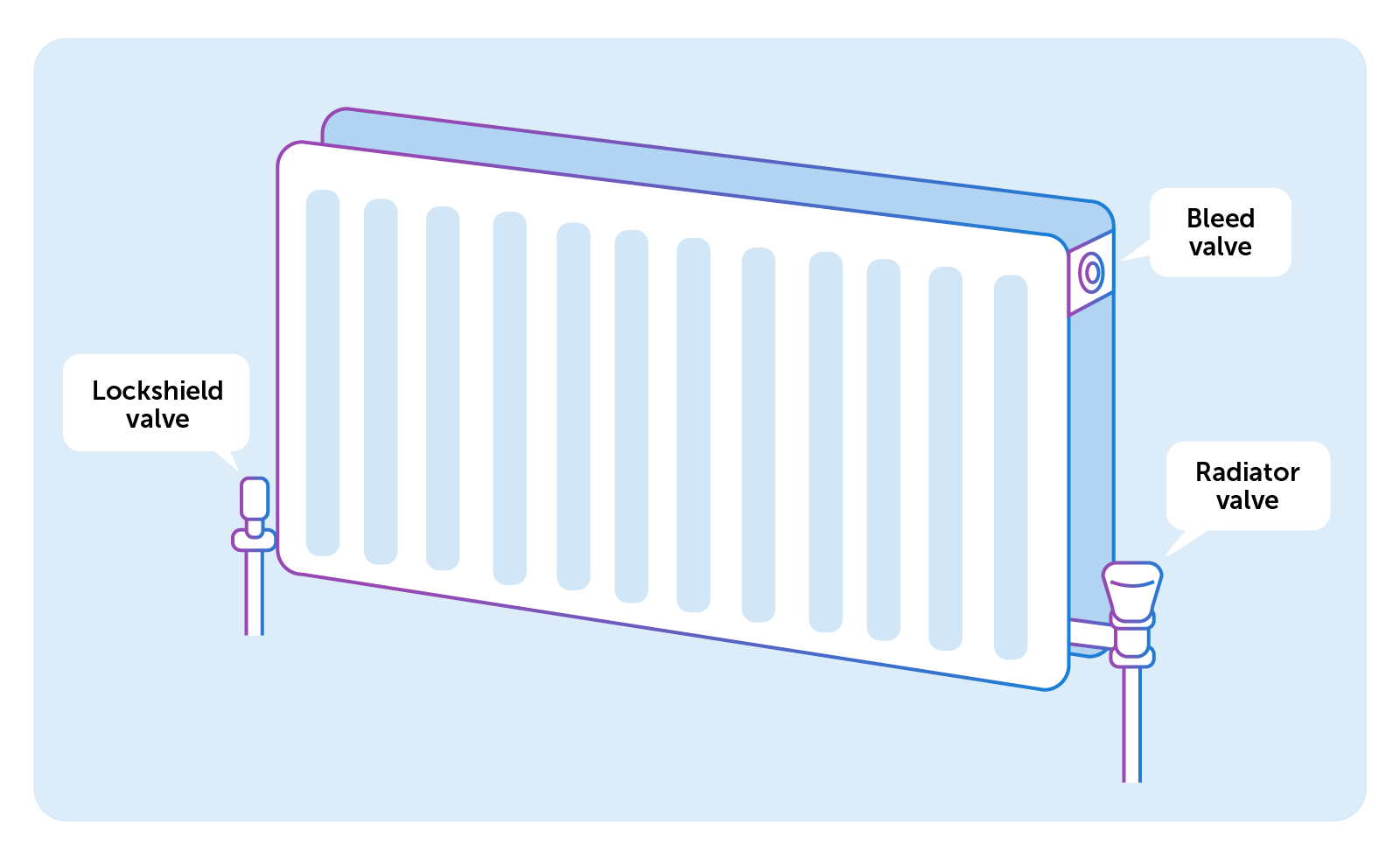
Radiator valves control the hot water flow to the radiator so you can change a room’s temperature. Your radiators have two valves – a thermostatic radiator valve (TRV) or a manual valve at one end. And a lockshield valve at the other. We’ll explore the differences between these later.
In the meantime, here's why you might need to change a valve:
- The radiator isn’t warming up or cooling down
- You’re upgrading a manual valve to a TRV
- You can’t turn the valve up or down
- The valve’s leaking
Types of radiator valve
Manual, TRV and lockshield are the three types of valve. These all work a little differently − and some are easier to replace than others. Like with TRVs, sometimes you only need to replace the valve head. Let’s run through the different types…
Manual
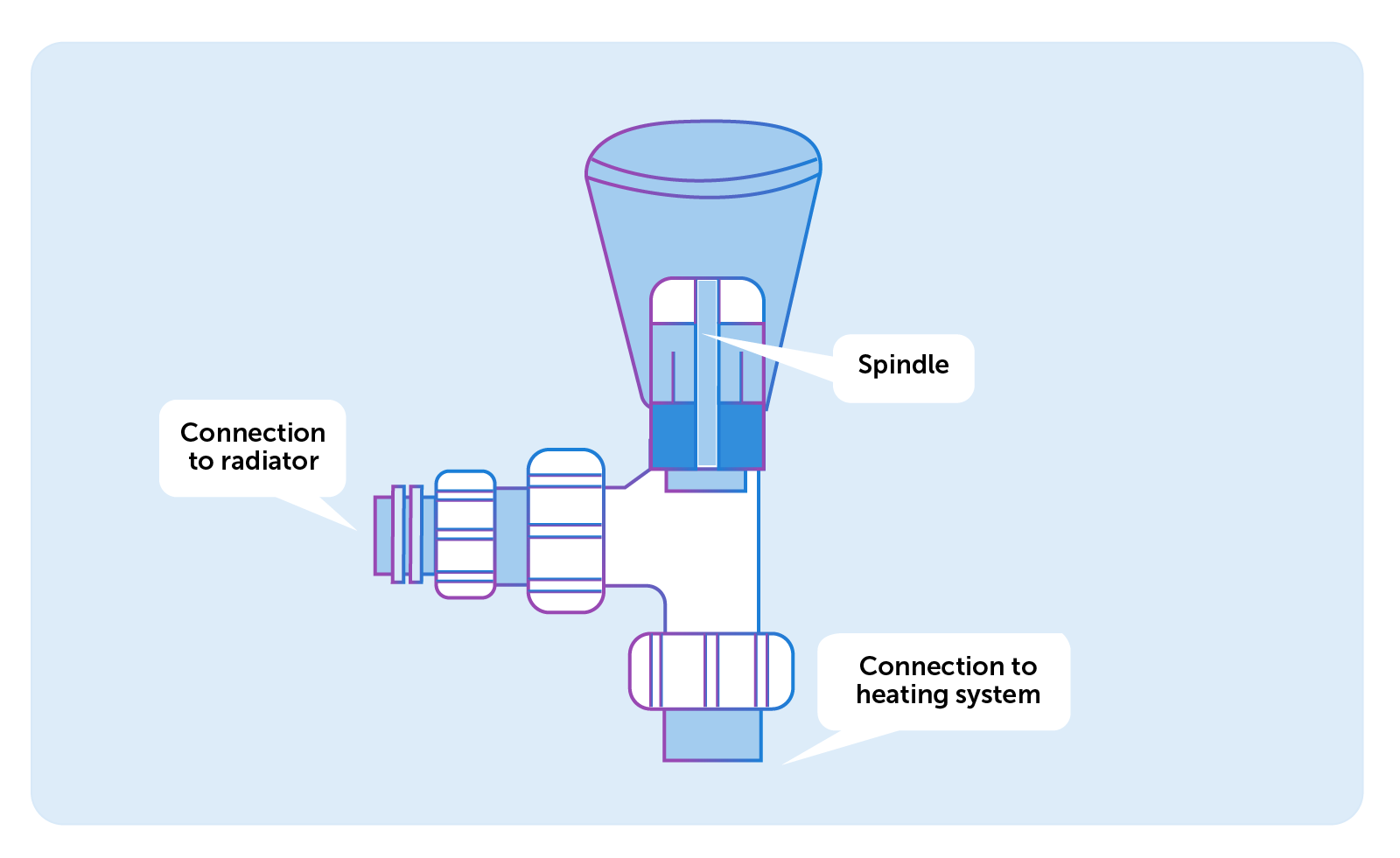
As the name suggests, manual valves need to be adjusted by hand. They typically have a simple design and turn on and off like a tap. When turned to the 'on’ setting, hot water flows into the radiator, heating it up.
Newer homes tend to have radiators with TRVs, which can be more cost-efficient. If you forget to turn a manual valve off, it will keep warming the room. This leads to wasted energy and higher bills.
Thermostatic radiator valve (TRV)
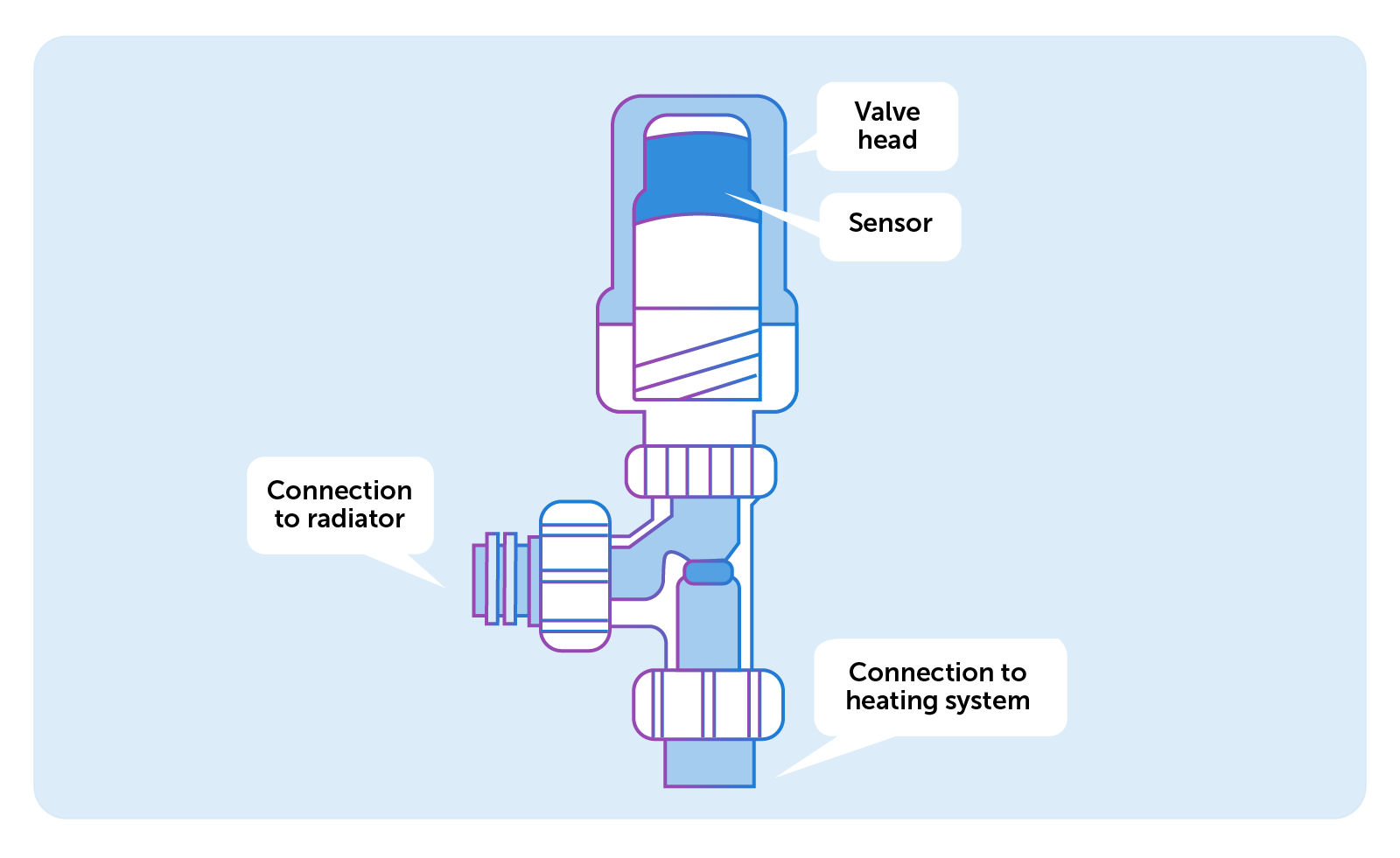
TRVs have a sensor that can detect a room's temperature. The sensor switches off when the room reaches the temperature you want. And when the room gets cold again, the sensor will turn back on. This increases the water flow to the radiator, bringing the room back up to the right temperature.
You can recognise TRVs by the numbers, screen or buttons on the outside.
Lockshield
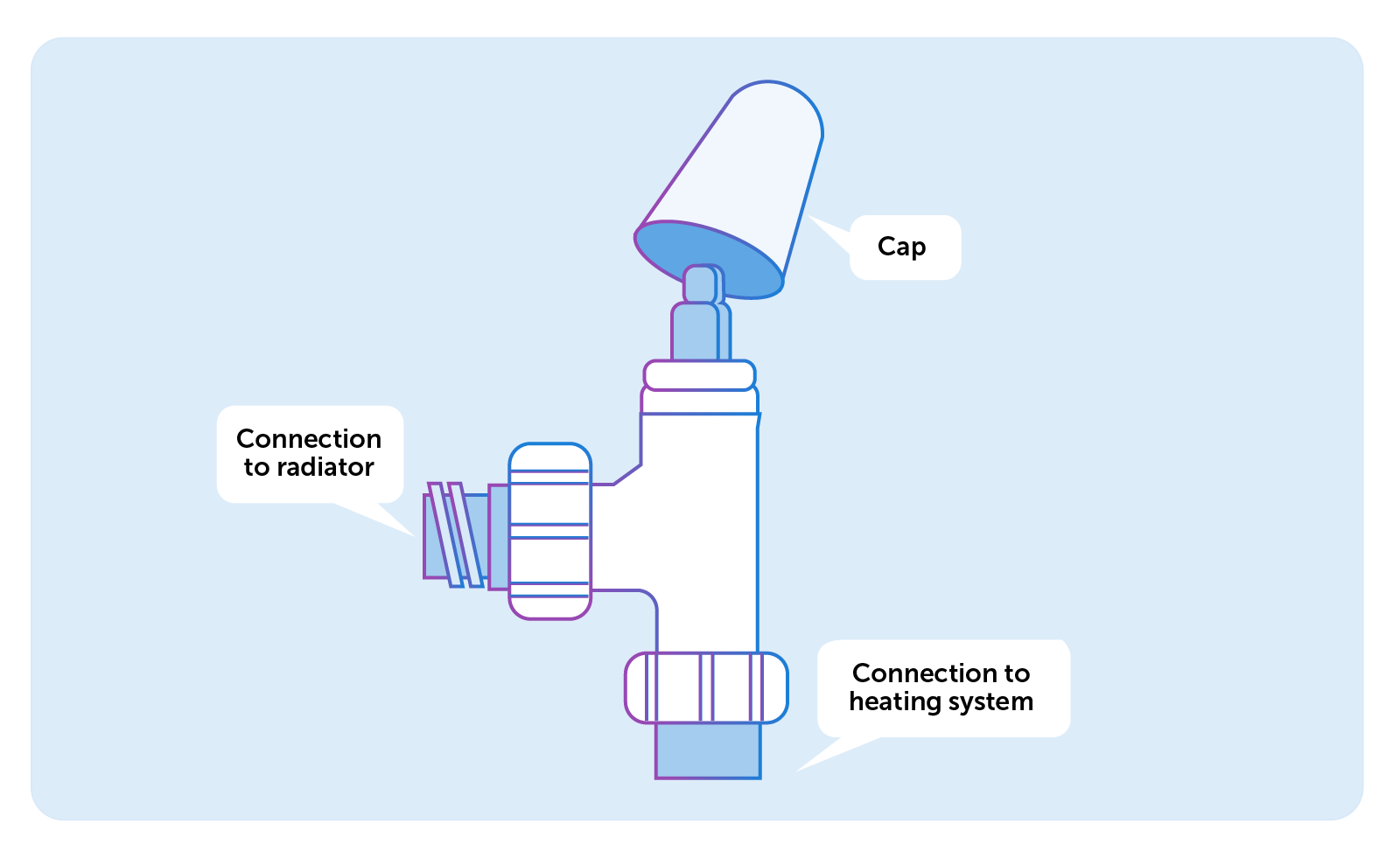
You probably won’t have to use the lockshield valve very often. It controls the amount of water that enters and leaves. So, it’s for things like isolating a radiator from the heating system or balancing a radiator.
It usually has a plastic cap and the valve itself looks like the tip of a flat-head screwdriver.
How to replace a radiator valve
Replacing a valve takes some technical skill. We'll talk you through each step. But if you don’t feel confident or are unsure at any point, please contact a Gas-Safe engineer. They’ll be able to identify any faults and replace the valve.
These instructions only apply to combination boilers. If you have a system or conventional boiler, you’ll need to get a professional to help.
Before getting to work, make sure you have this equipment to hand:
- Replacement valve
- Spanner
- Wrench
- PTFE tape (plumbers tape)
- Hose
- Bucket
- Jubilee clip (a type of metal hose clamp)
- Wire wool
- Old cloths or towels
- Radiator key or flathead screwdriver
1. Turn off the heating and water supply
First, switch off the power to your boiler. Turn down any thermostats and check no heating programs are running. The last thing you need is your heating coming on while you’re trying to change a valve. You should also turn off your water supply at the stopcock.
2. Drain the central heating system
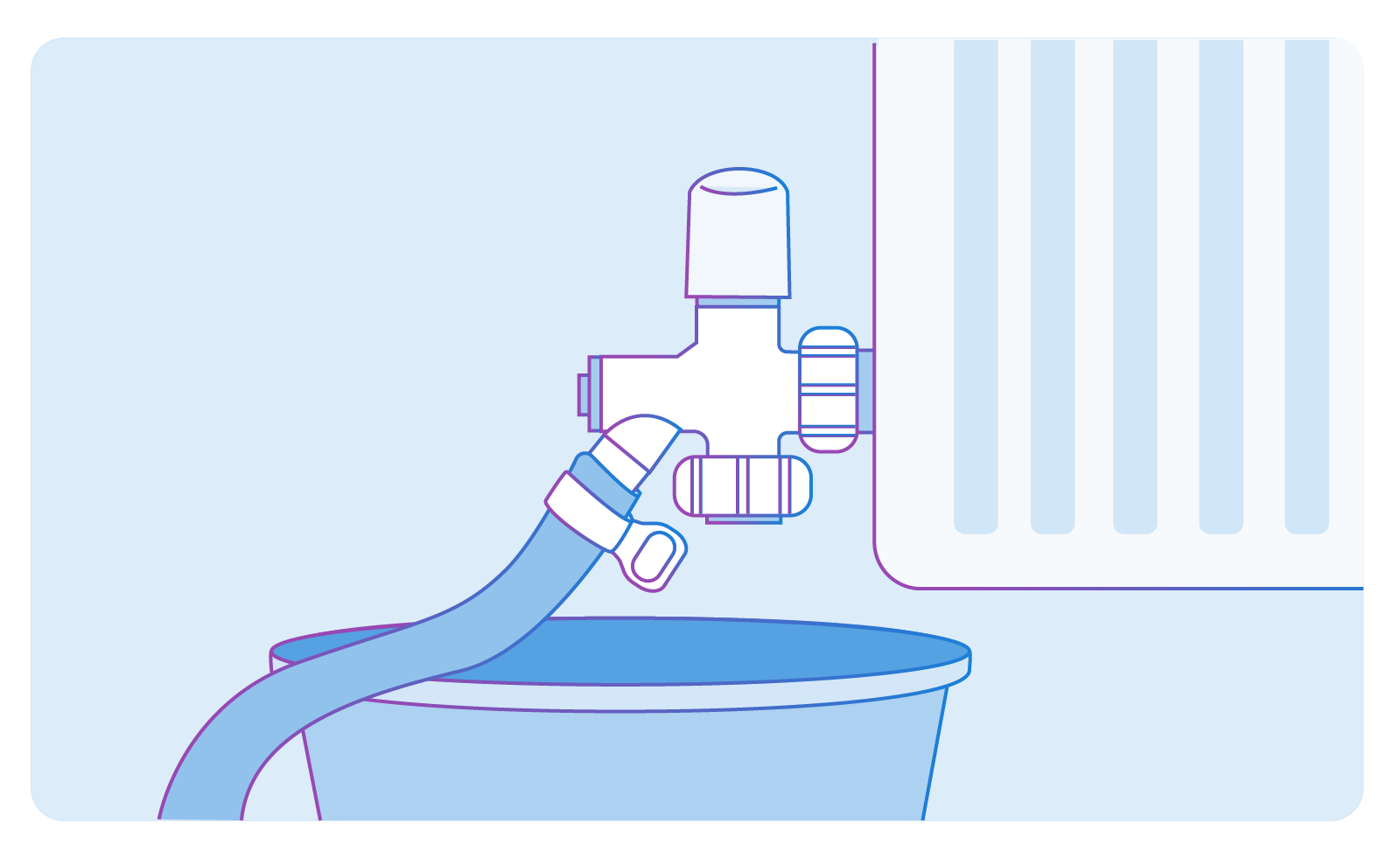
You need to ensure there’s no water in your radiators before fitting the new valve. To do this,
find the radiator in your home with the drain-off valve. It will be at the bottom of the radiator – either on the left or right side. Once you’ve found it, put old towels underneath to catch any leaking water. Attach a hose to the valve, securing it with a jubilee clip (this is a type of metal hose clamp). Then, guide the other end of the hose outside.
Now, you can open the valve and drain the water outdoors. If the hose isn’t long enough, drain the water into a bucket. Wait until all the water has left the radiator before taking on the next step.
3. Remove the old valve
Go back to the valve that needs changing. Hold it with a wrench to keep it steady. Then, use a spanner to loosen the nuts next to the pipe and radiator. You should be turning them anticlockwise.
The valve should now come away from the radiator and pipe. Your new valve might have nuts of a different size. If it does, remove the old ones and the olives (the metal rings inside the nuts). If the old nuts and olives fit the new valve, leave them there. Just give them a quick clean with wire wool before fitting the replacement.
4. Fit the new valve

Wrap some PTFE tape (plumbers tape) around the threads (the spiral ridges at the ends of the pipes). This will help stop the new valve from leaking.
Fit the replacement by holding it with the wrench and tightening the nuts with the spanner. Check the valve lines up with the connecting pipes − and that you’re turning the nuts clockwise.
5. Refill the central heating system
Turn the water supply back on at the stopcock. To refill your heating system:
- Find the filling loop under your boiler (this is a braided hose with levers at both ends)
- Turn the levers to open the valves, lining them up with the direction of the filling loop
- Let water into the system
- You should hear water running and see the boiler pressure rising
- Shut off both valves when the gauge on your boiler reaches 1.2 bar
If you can’t see the loop under your boiler, you might have a keyless internal filling loop. Check your boiler’s user manual to confirm.
Our blog has more tips on changing the pressure and finding the pressure gauge.
6. Bleed your radiators
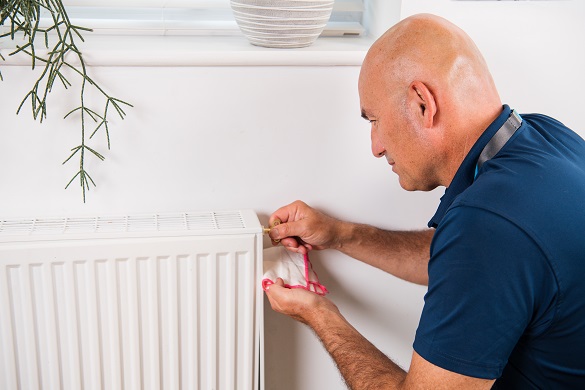
Next, you’ll need to bleed all your radiators to get rid of trapped air.
But first, make sure the thermostatic or manual and lockshield valves are on. The boiler will still be off, meaning the heating won’t come on. By ‘on’, we mean opening the valves so the radiators can fill with water.
Now, you’re ready to follow these steps:
- Find the bleed valve at the top of the radiator
- Insert a radiator key or flathead screwdriver into the valve
- Turn the key anticlockwise until air comes out and you hear a hissing sound
- When water starts coming out, turn the key clockwise to close it again
- Repeat this process with all of your radiators
Now you can switch on the heating. Wait for your radiators to warm up and look at your boiler’s pressure gauge. It should be between 1 and 1.5 bar or 15 to 20 psi.
7. Test the new valve
Double-check the new valve fitting for leaks. If there are any, you can gently tighten the valve with an adjustable spanner. Just take care, as by now your radiators will be nice and toasty!
How to change a TRV head
If your radiator has a TRV, you might not need to change the whole valve. Sometimes, it’s just the head that needs replacing. This could be the case if the radiator is set to the lowest temperature but won't cool down.
With TRVs, there's a metal pin inside that sometimes gets trapped – rule this out before replacing the head. When ready, unscrew the radiator valve head to show the pin. Carefully push down and see if it springs back up. If the pin’s all fine, the TRV head might be faulty.
Pick up a replacement head from a DIY store. Not all radiator heads are interchangeable – so measure the connection on the old one before choosing a replacement.
Here’s how to fit the replacement:
- Unscrew the old valve by turning it anticlockwise
- Remove any metal rings securing the valve
- Check the pin moves up and down
- Line up the new TRV head with the valve’s stem
- Screw the new head onto the stem by hand, tightening it with a wrench if you need to
- Retighten any metal rings
- Test the new valve by adjusting the temperature to different settings
Protect your heating system
Our maintenance and support plans include an annual boiler service by a Gas Safe engineer. You also get tips to help keep your boiler running smoothly. Plus, we can take care of your central heating system for a little extra.
So, if you want to protect your radiators and valves, have a look at our plans.
Our blog is loaded with more related articles

Plumbing and heating tips
How to balance your radiators
If your radiators aren’t heating up properly or evenly, you may need to balance them. Read this step by step guide to fin...
Read more
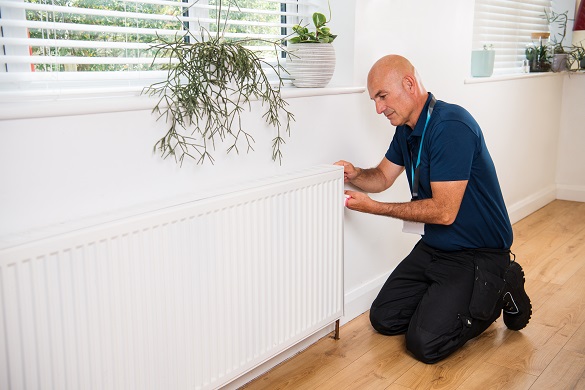
Plumbing and heating tips
How to bleed a radiator
If your radiators aren’t heating up properly, they may need bleeding. Read our guide on how to bleed a radiator, and find...
Read more
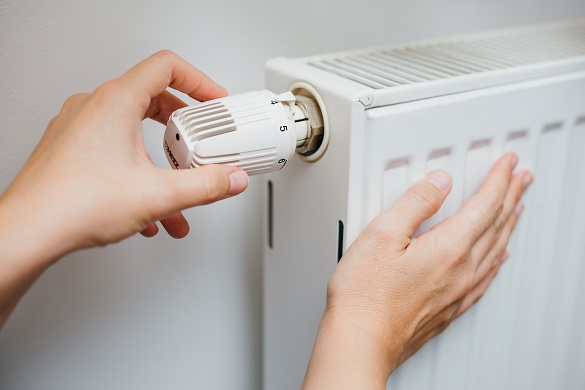
Plumbing and heating tips
Radiator troubleshooting advice
Looking for radiator help? Read on to find out what to do if your radiators are cold, how to bleed a radiator and other radiato...
Read more
